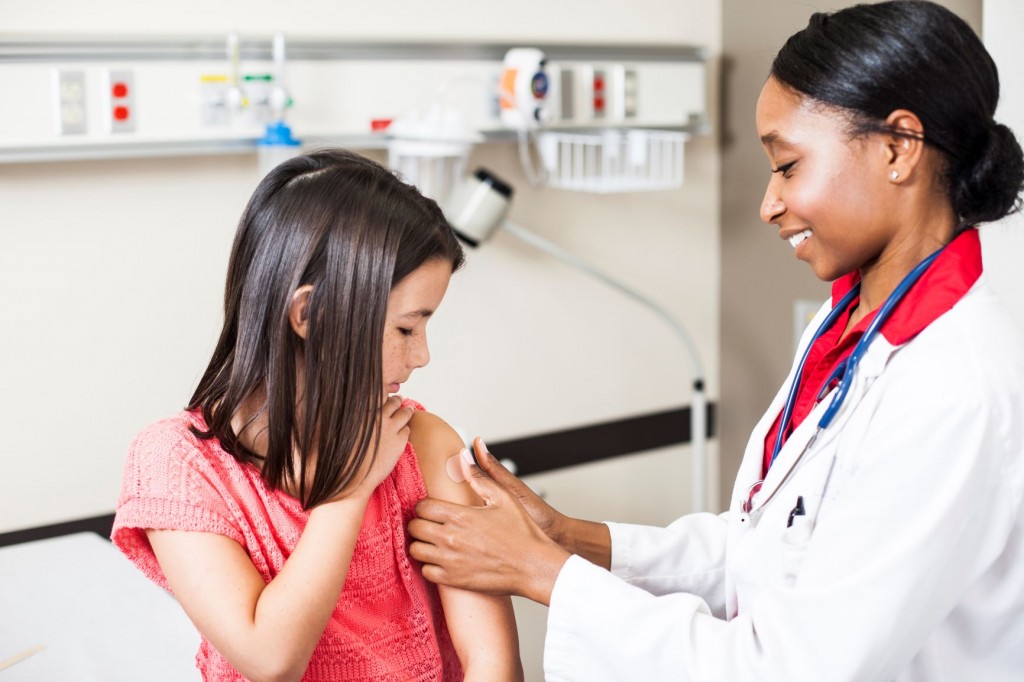 In the midst of nationwide outbreaks of measles, and increases in Arizona cases of vaccine-preventable diseases, Arizona’s vaccine coverage rates continue to decrease. This places more Arizona children, families, and communities at risk for vaccine-preventable disease outbreaks. For the third year in a row, non-medical exemption rates–the percentage of students exempt from one or more vaccines–increased across all age categories.
In the midst of nationwide outbreaks of measles, and increases in Arizona cases of vaccine-preventable diseases, Arizona’s vaccine coverage rates continue to decrease. This places more Arizona children, families, and communities at risk for vaccine-preventable disease outbreaks. For the third year in a row, non-medical exemption rates–the percentage of students exempt from one or more vaccines–increased across all age categories.
The smallest exemption rate increase compared to last year, from 4.3 percent to 4.5 percent, occurred for child care/preschool. Coverage rates for this age group did not change substantially compared to last year, and have shown the least dramatic changes over time. In kindergarten and 6th grade, this year’s increase in exemption rates was greater; from 5.4 percent to 5.9 percent for kindergarten and from 5.4 percent to 6.1 percent for 6th grade. Immunization coverage for these two age groups decreased in the 2018-2019 school year, leaving fewer children protected from disease.
Since 2000, religious belief exemption rates for child care/preschool have increased from one percent to 4.5 percent, while personal belief exemption rates in kindergarten have gone from 1.4 percent to 5.9 percent and in 6th grade from 1 percent to 6.1 percent. Exemptions for medical reasons, which are allowable in all age groups and must be signed by a healthcare provider, are consistently rare, with rates well below 1 percent in all three of the age groups.
Arizona law requires that all children attending school or child care must obtain certain vaccines, unless they are exempted by a doctor for medical reasons, or by a parent for personal or religious reasons. Each year, immunization information for all students in 6th grade, kindergarten, and child care/preschool must be submitted by the school to ADHS. This information is summarized and reported through an online application called the Immunization Data Report (IDR). You can find the full results of the IDR at the state, county, and individual school level on the ADHS Statistics & Reports – Immunization Coverage Levels page.
While the IDR only collect information for certain age groups, we often look at the kindergarten Measles, Mumps, and Rubella (MMR) coverage rate for a representation of protection status. This year, the MMR rate fell again to 93 percent, which is below the 95 percent considered necessary to protect a community from rapid spread of infection in the event of a measles case in that community. In some Arizona counties, the MMR coverage rate is even lower. In fact, nine out of our 15 counties fall below the 95 percent threshold.
As exemption rates rise and coverage rates fall, public health is working hard to reverse this trend. The staff at the ADHS Immunization Program Office works directly with healthcare providers, schools, and child care programs to provide training and assistance with a focus on quality improvement assessments, compliance with the Vaccines for Children (VFC) program and school immunization requirements, and how to use and navigate the state immunization registry. CDC also has fantastic resources for parents explaining vaccines and the diseases they prevent.
For more information regarding vaccine requirements and educational information please visit our Child Care, School, and College Immunization Rates website.









